The information in this article is based on data compiled in the 1965 USGS publication Principal Gold Producing Districts of the United States.
Utah produced approximately 17,765,000 ounces of gold through 1960, making it sixth among the gold-producing states. Thirteen districts in nine counties yielded more than 10,000 ounces of gold each.
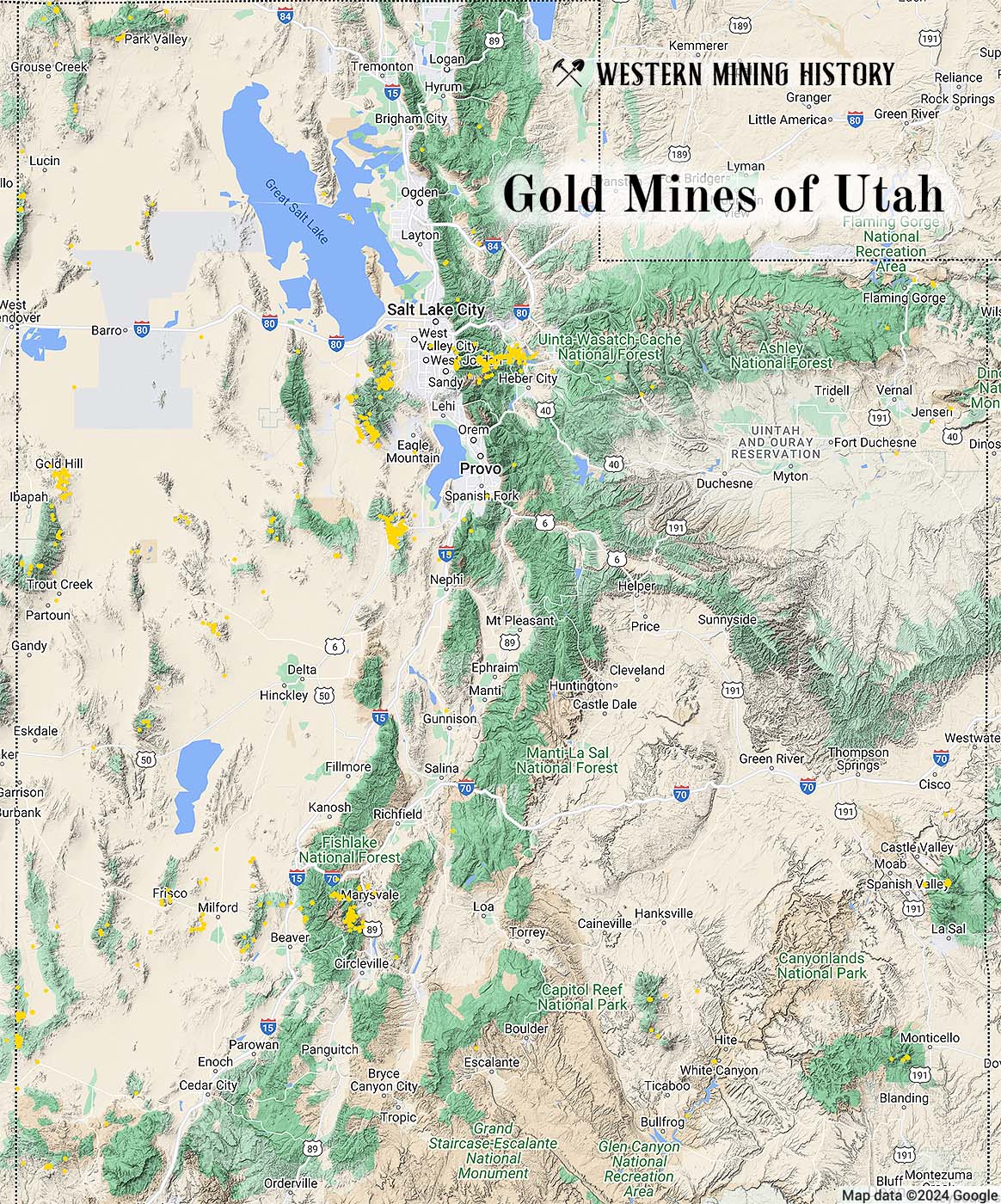
Note: significant gold has been mined in Utah since this data was compiled, primarily from the Bingham and Mercur mines. Updated totals from those districts are included below.
Historical Overview
Unlike other western states, Utah’s early development was driven by Mormon settlers and not by the discovery of rich mineral deposits. Although metal deposits were discovered by the settlers in the 1850s, mining was discouraged by the Mormon church.
The first real prospecting in the region was started in 1862 by a contingent of the U.S. army called the California Volunteers, many of whom were prospectors and miners from the gold fields of California.
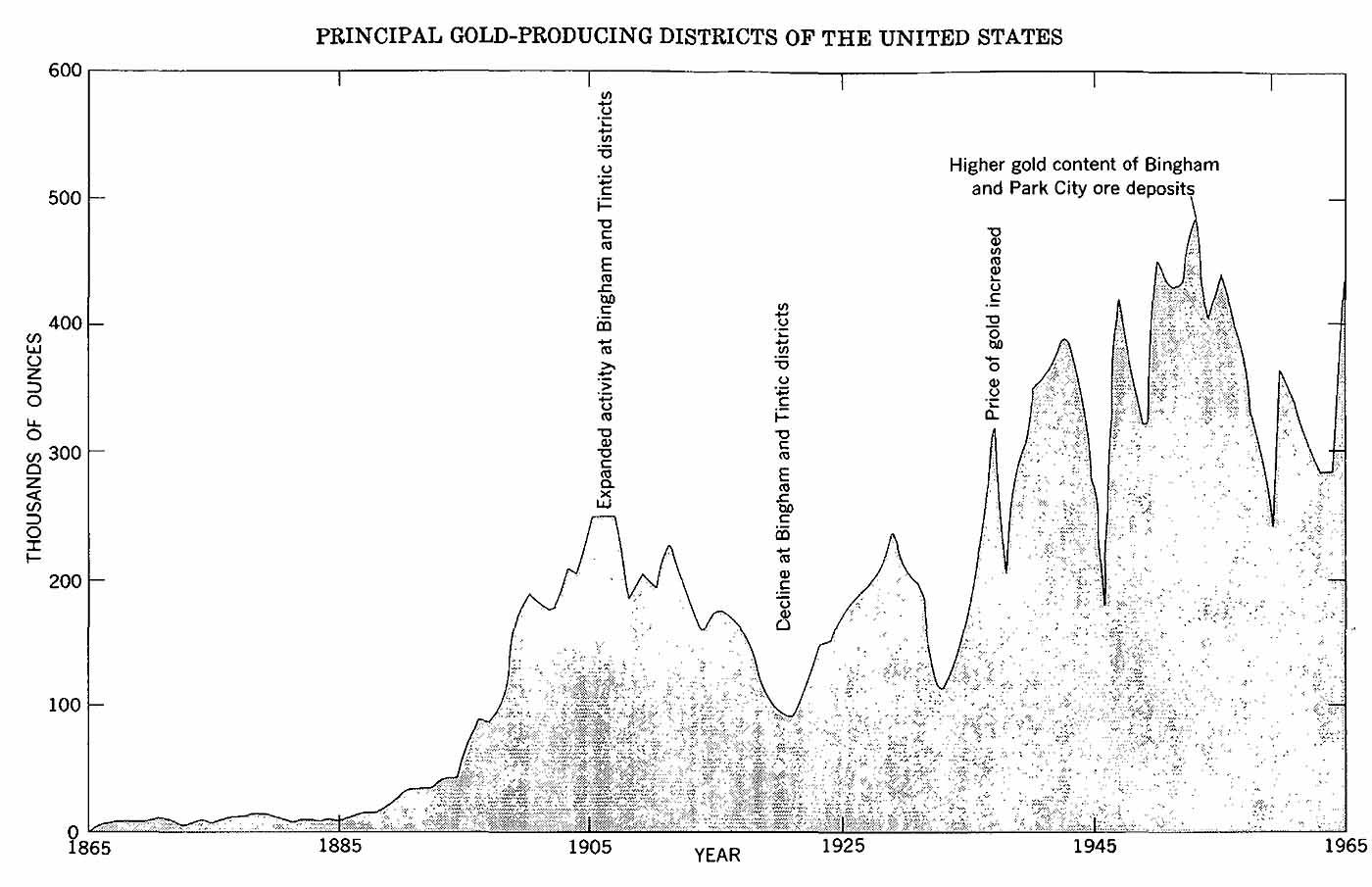
The gold placers of Bingham Canyon were discovered in 1864 but were mined out within a few years. Most of the early mining in the state was from deposits of silver-lead ore – gold was not a significant commodity in Utah like it was in other states. It was not until the mid-1890s that gold production became significant in the state, with much of the production being a byproduct of copper and base-metal ores.
Principal Gold Districts
In Utah, thirteen mining districts have each have produced more than 10,000 ounces of gold. The most productive gold mining areas in the state are the Bingham, Tintic, Camp Floyd, and Park City districts, which are located south and east of Salt Lake City.
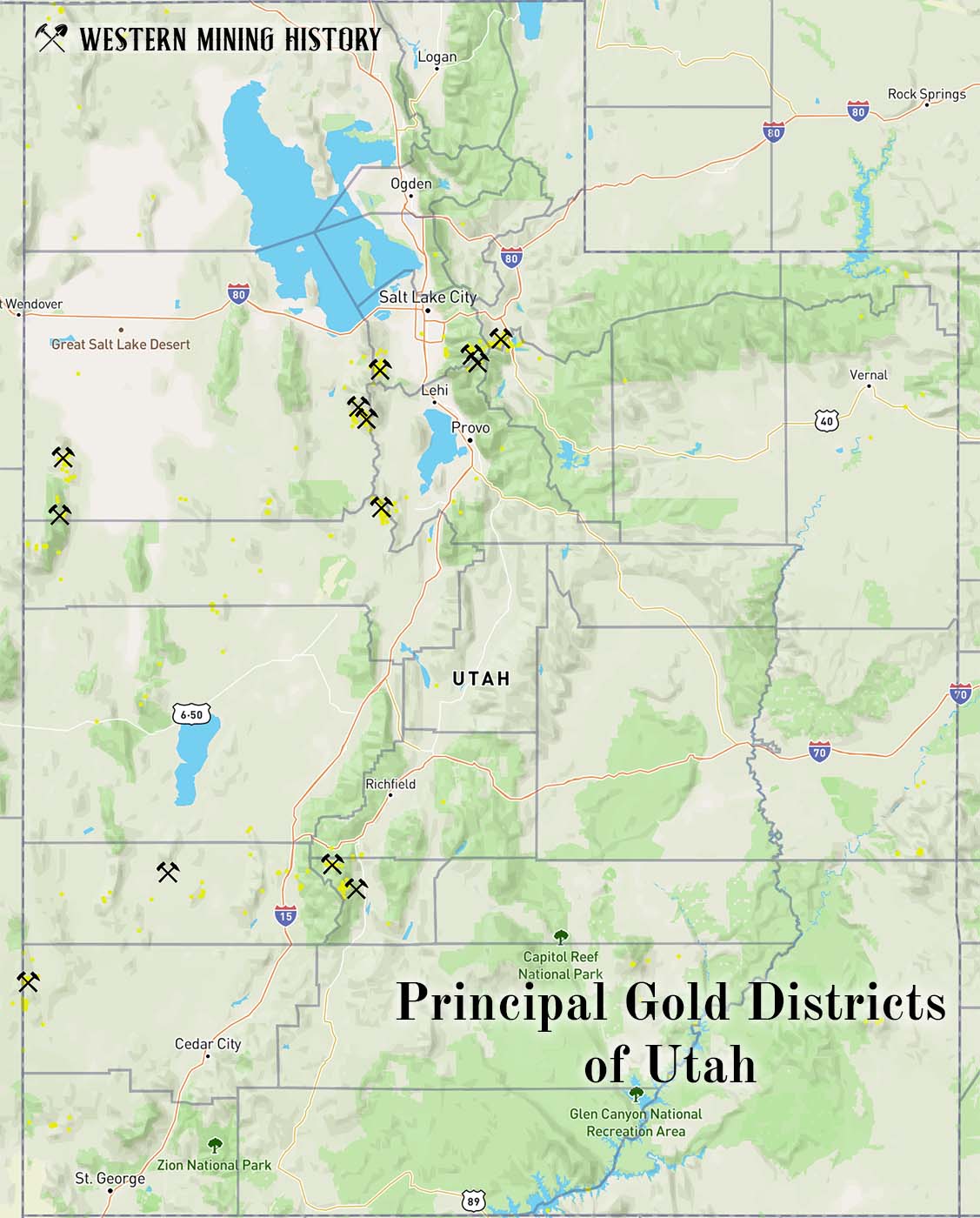
Beaver County
Beaver County is known for its deposits of silver, lead, zinc, and copper, with relatively small amounts of gold. Total gold production from 1860 through 1959 for the entire county was about 55,850 ounces. Only the San Francisco district has produced more than 10,000 ounces of gold.
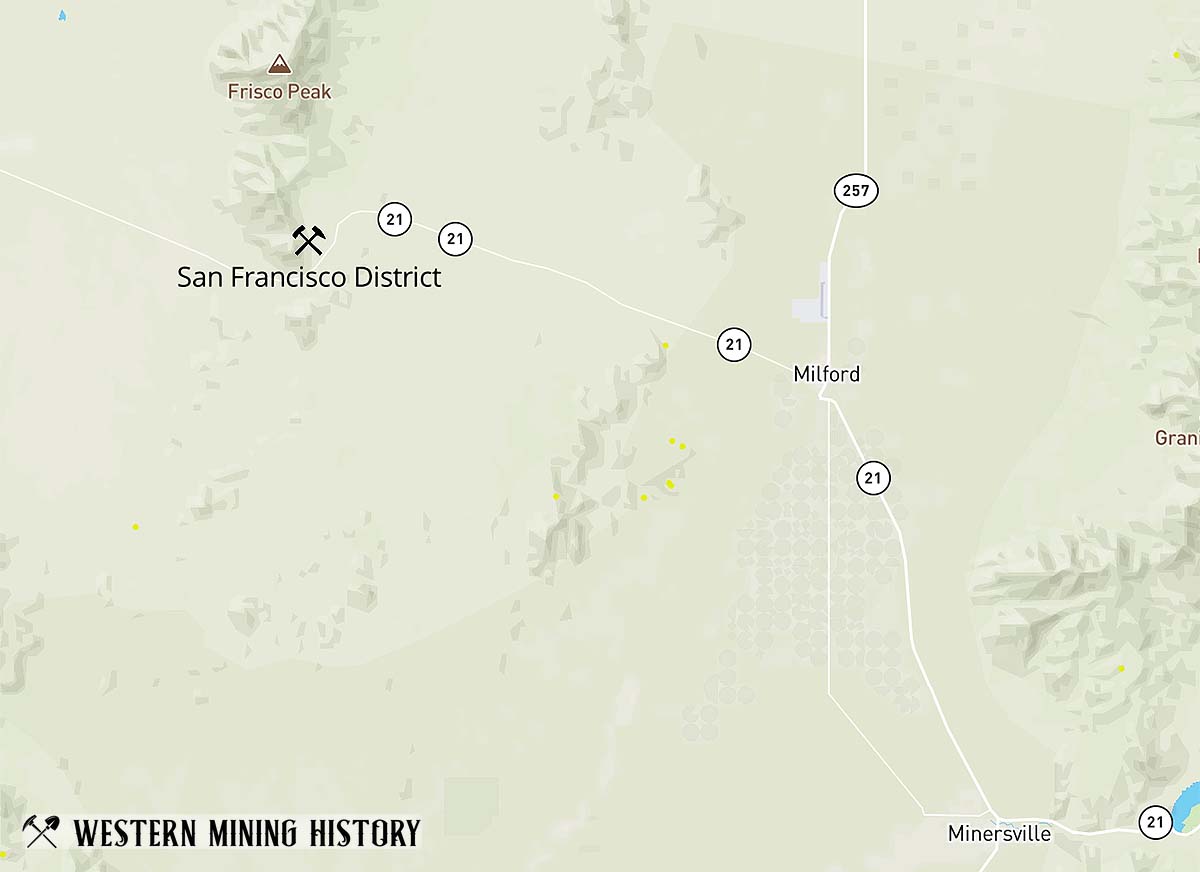
San Francisco District
The San Francisco district, located in the San Francisco Mountains near the mining ghost town of Frisco, has produced 60 percent of the county’s gold, mostly as a byproduct of base-metal ores. Total production through 1959 was approximately 33,400 ounces.
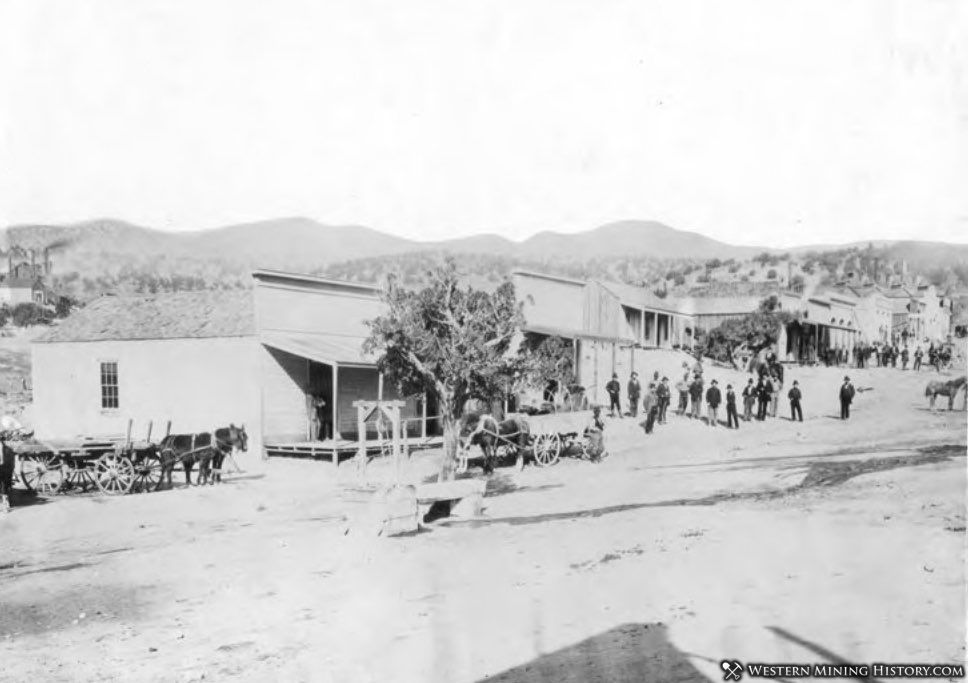
The Horn Silver mine was the district’s largest producer. Discovered in the early 1870s, the mine had its best years from 1876 until the mid-1880s.
Iron County
Iron County is mostly known for the iron production of the Iron Springs district. Only the Stateline district produced more than 10,000 ounces of gold.
Stateline District
The ores of the Stateline district were not discovered until the 1890s, and the mines here did not enter a period of sustained development until 1917. Most of the 12,760 ounces of gold credited to Iron County came from this district.
Silver and lead were also mined here. The ore minerals are primarily pyrite and native gold, although gold and silver tellurides are also present.
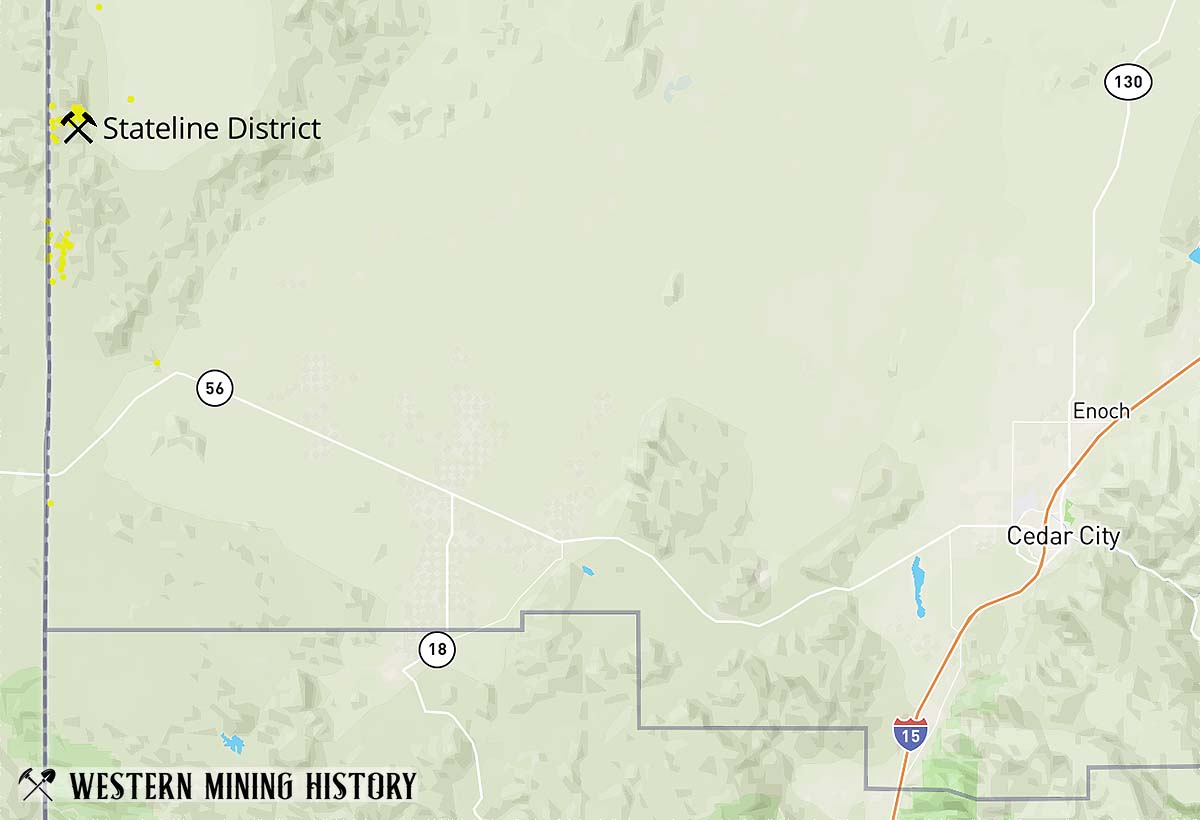
Juab County
The most important ore deposits in Juab County are those of the Tintic district in the northeastern corner of the county. Large amounts of silver, gold, lead, copper, and zinc were mined here. Several other districts produced gold, but only the Tintic recorded production of more than 10,000 ounces.
Tintic District
The Tintic district is about 60 miles south of Salt Lake City in the central part of the East Tintic Mountains. The mining town of Eureka is the primary settlement in the area.
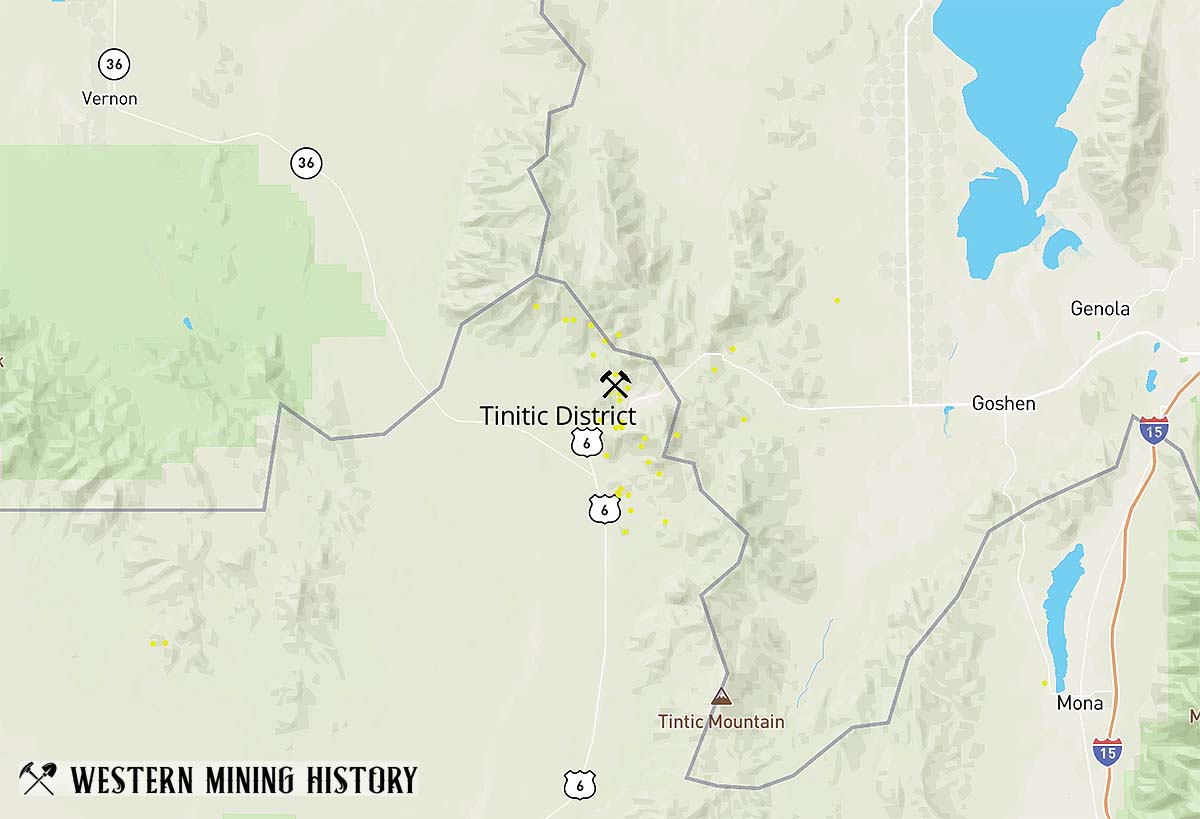
Tintic is one of the top three mining districts in Utah. Approximately 2,648,000 ounces of gold were mined here, along with over $400,000,000 in silver, lead, gold, copper, and zinc.
The first valuable ore discoveries were made in 1869. Production in the district was hampered in the 1870s by poor transportation infrastructure and the lack of smelters. By the late 1870s the first rail links to the district were established, and output from the mines doubled by 1879.
Gold production in the district was relatively small through most of the 1880’s, but it increased significantly in 1889, and in 1907 reached a peak production of 113,000 ounces. The district was active until 1957.
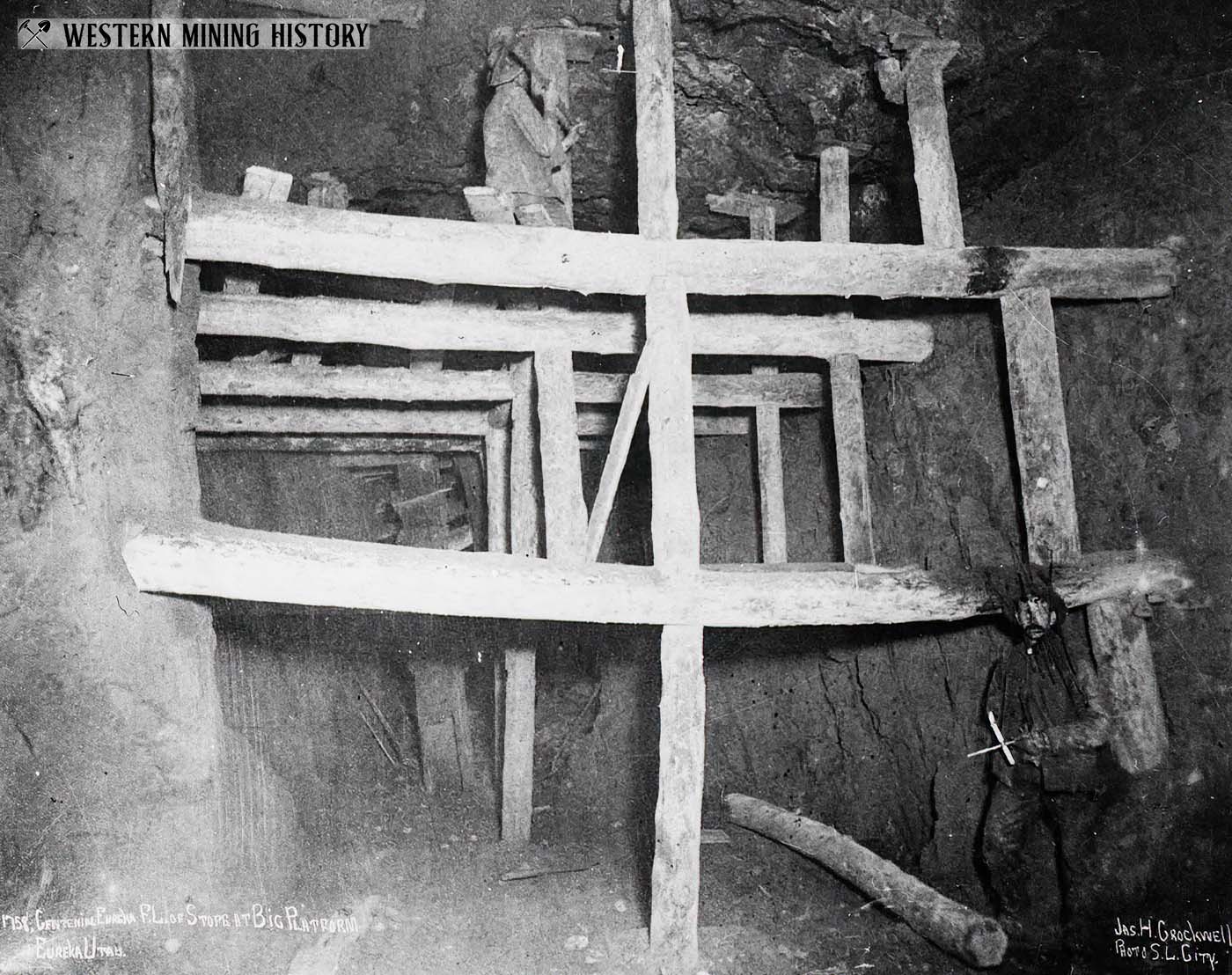
The principal mines of the Tinitic district were the Chief, Centennial Eureka, Mammoth, Gemini, Eureka Hill, Iron Blossom, Tintic Standard, North Lilly, and Eureka Lilly.
Piute County
The majority of gold produced in Piute County came from the Gold Mountain and Mount Baldy districts which produced approximately 240,000 ounces.
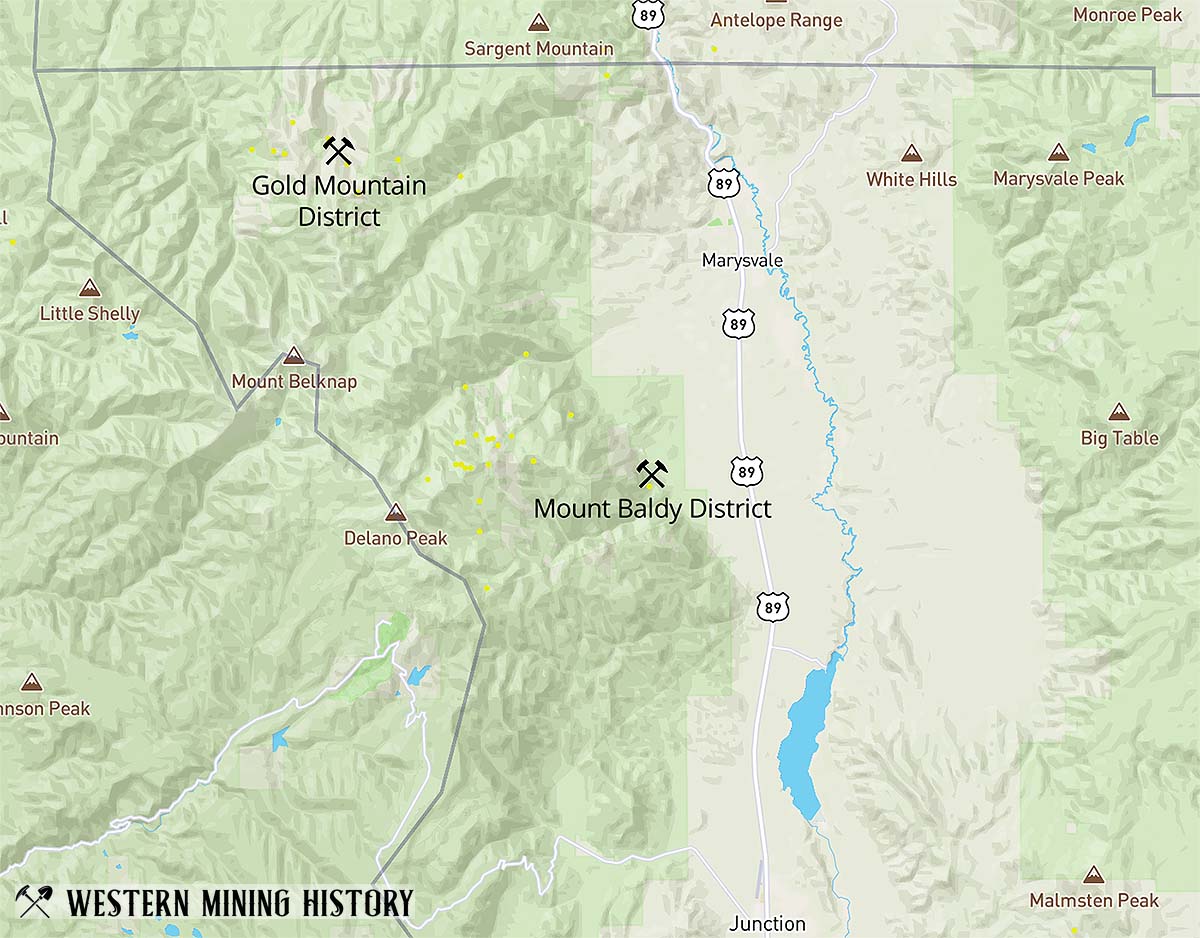
Gold Mountain District
Gold deposits were known to exist at Gold Mountain for many years, but it wasn’t until the cyanide process for treating complex ores became available that mining began in the area. The district was organized in 1889 and the first mill was built at the Annie Laurie mine.
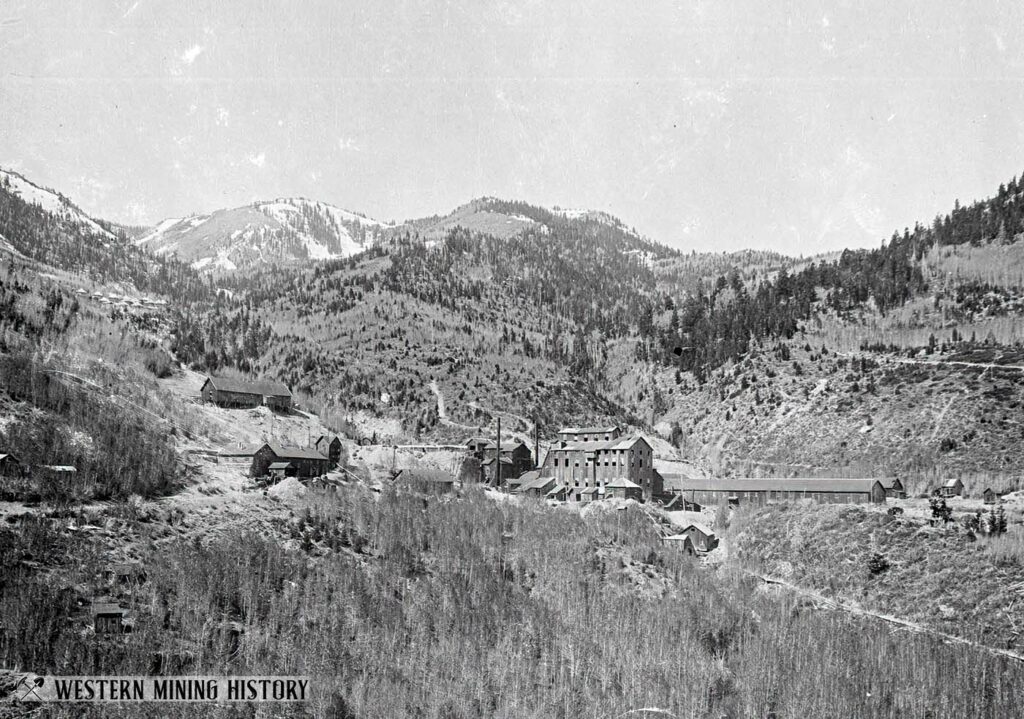
From 1901 through 1913, over 130,000 ounces of gold was mined, primarily from the Annie Laurie and Sevier mines. The district declined after 1914 was mostly idle from 1918 to 1934. A brief resurgence occurred during the years 1934 through 1940, followed by intermittent small-scale activity through 1959. Total gold production through 1959 was about 159,000 ounces.
Mount Baldy District
The Mount Baldy (Ohio) district is on the east side of the Tushar Range about six miles southwest of Marysvale. The first ore discoveries were made about 1868 near the Ohio camp and in 1878 near the Mount Baldy camp. Early production apparently was small – records show production of approximately 8,000 to 10,000 tons of ore from 1868 to 1903.
Mining intensified from 1910 through 1940 but was sporadic thereafter. Production before 1904 is unknown, but from 1904 through 1959 77,500 ounces of gold was mined, most of it from the Deertrail mine.
Salt Lake County
Salt Lake County is home to Utah’s most productive mining district. The Bingham Canyon mine has been active for 120 years and is the worlds largest producer of copper, but has also produced enough gold to make it one of the top gold producers in the nation.
The Cottonwood district is located at Alta, and while this was primarily a silver district, over 10,000 ounces of gold were also mined here.
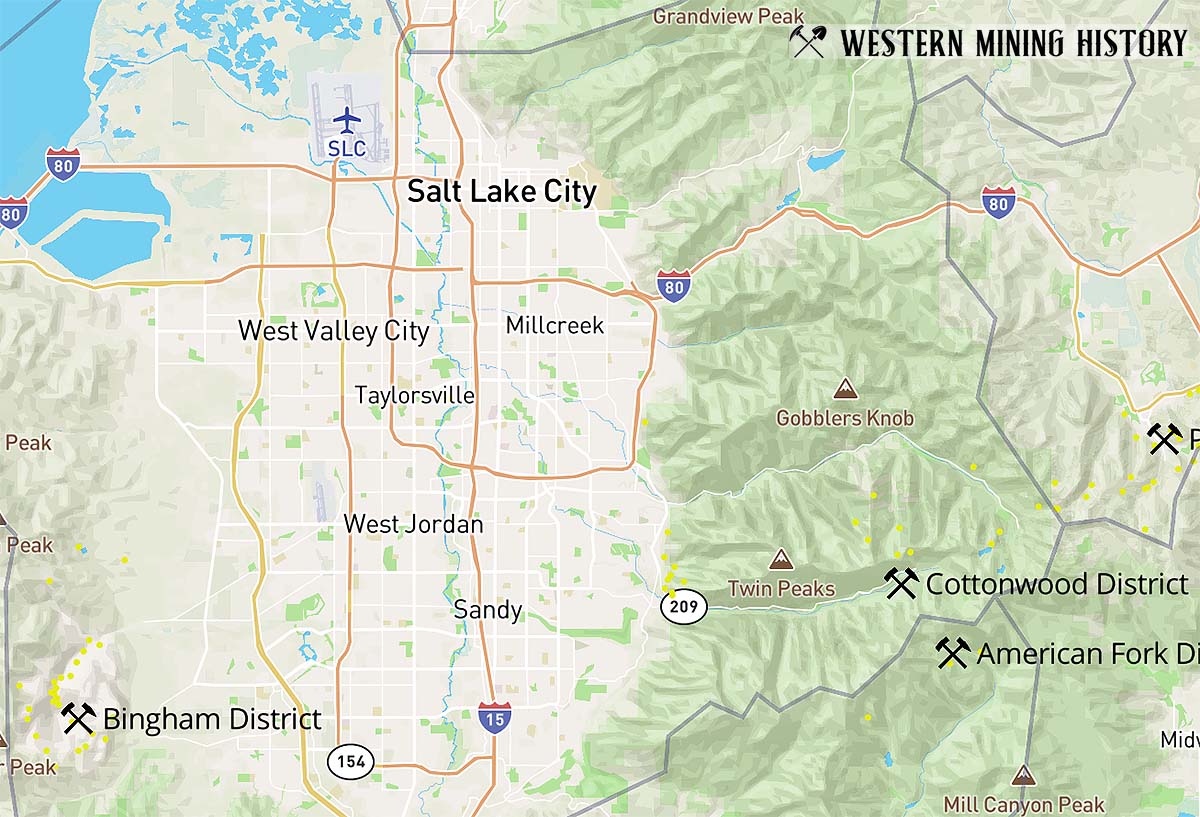
Bingham District
The first valuable lode deposits in Bingham Canyon were made in 1863. In 1864 gold placers were discovered which produced approximately $1,000,000 in gold by 1871.
Early attempts at lode mining were hindered by lack of transportation in the region. The arrival of the first rail line in 1873 led to increased lode mining activity in the district. Lead and silver were the primary mined commodities up until the 1893 financial depression which wiped out silver mining in much of the West.
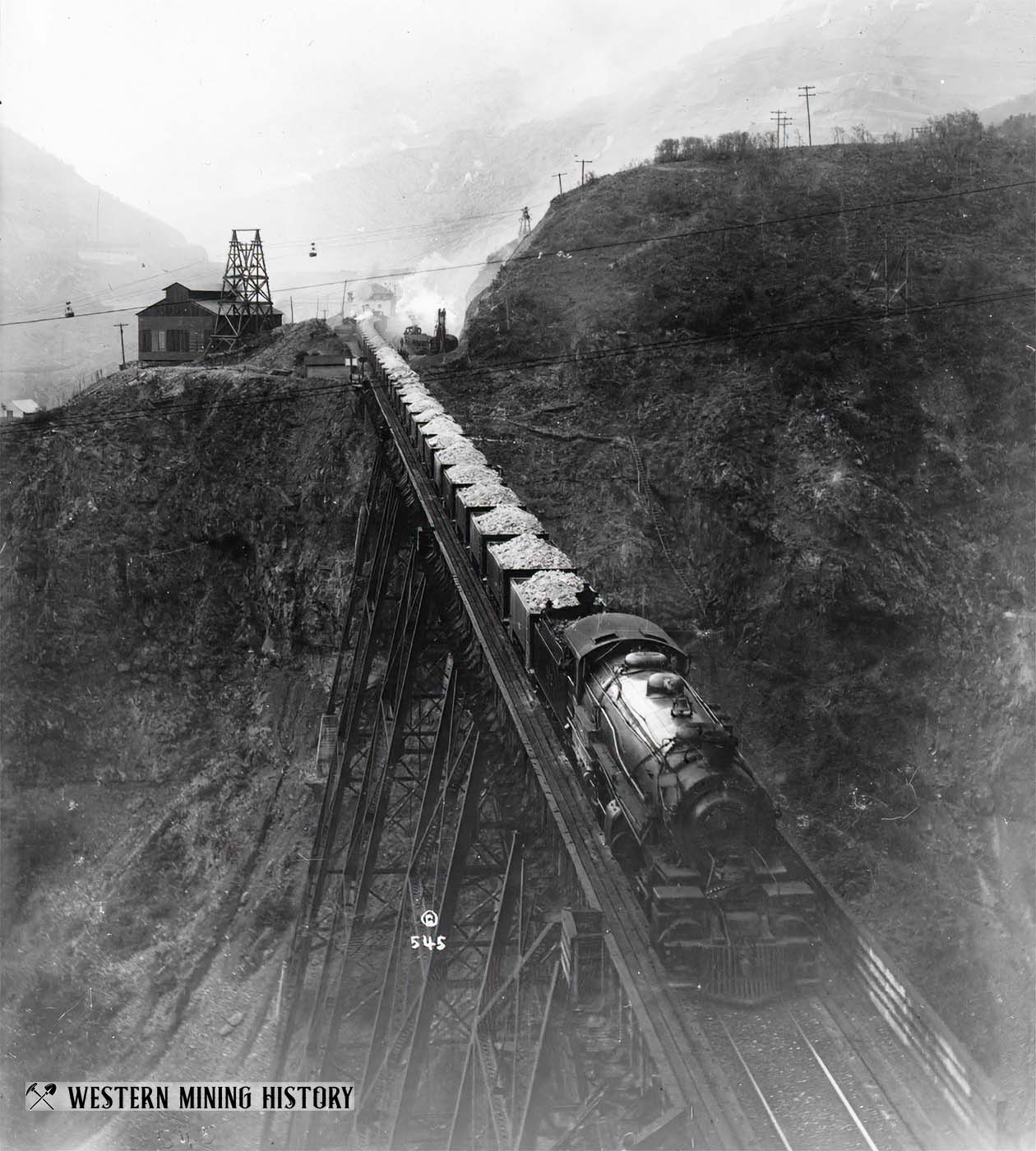
After 1893 attention turned to the extensive low-grade copper deposits of the district. Many of the mines in the canyon were consolidated and in 1907 large-scale open-pit copper mining began. The Bingham Canyon mine is still active today, and is now the deepest open-pit mine in the world.
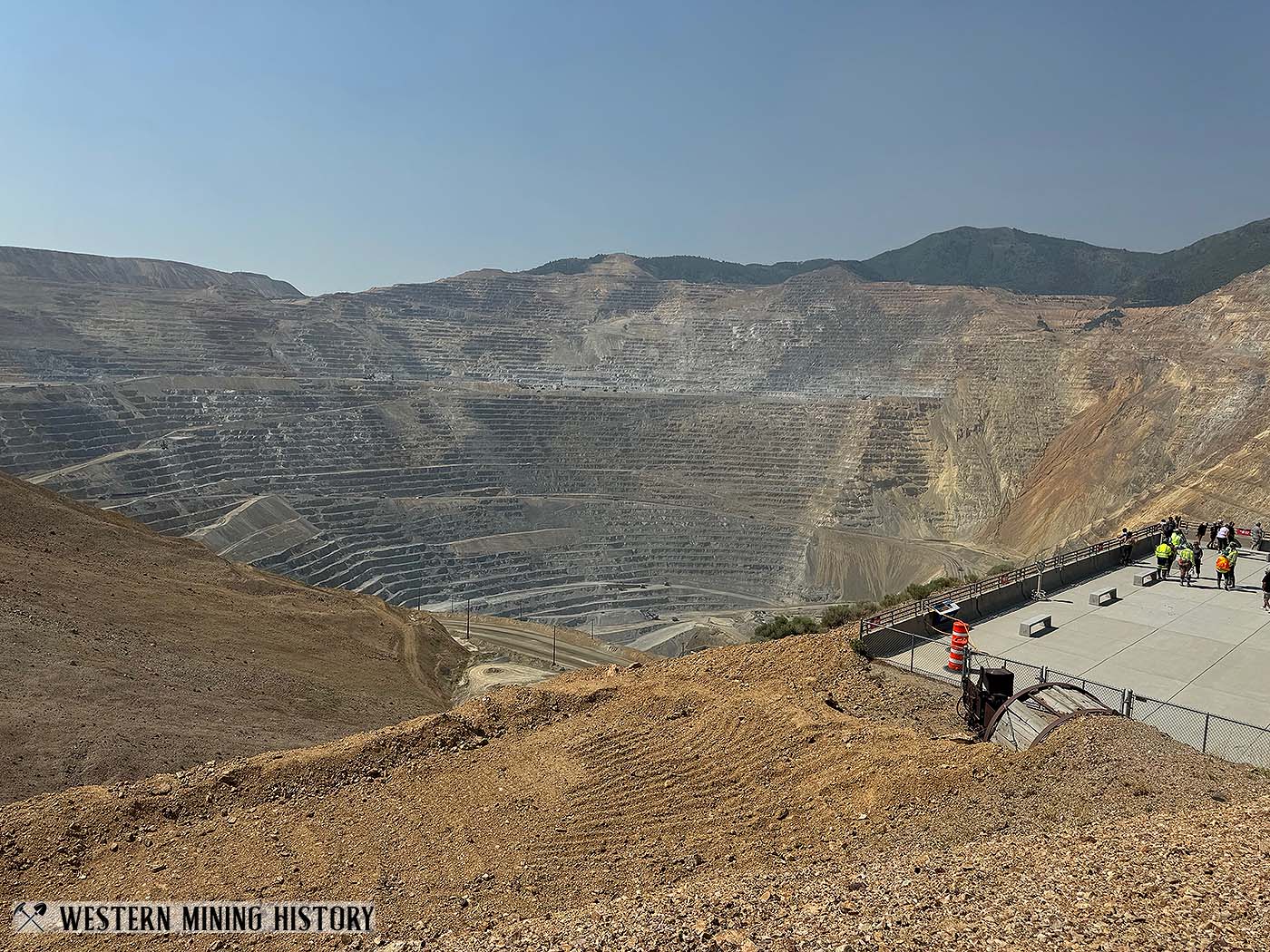
Today the Bingham Canyon mine continues to produce around 500,000 ounces of gold a year. With over 30,000,000 ounces of total production, this is likely the second largest producing gold mine in the United States behind the Homestake mine of South Dakota.
Cottonwood District
The Cottonwood district is composed of the Little Cottonwood and Big Cottonwood camps. Lode deposits containing silver, lead, copper, gold, and zinc were discovered in this area starting in 1865.
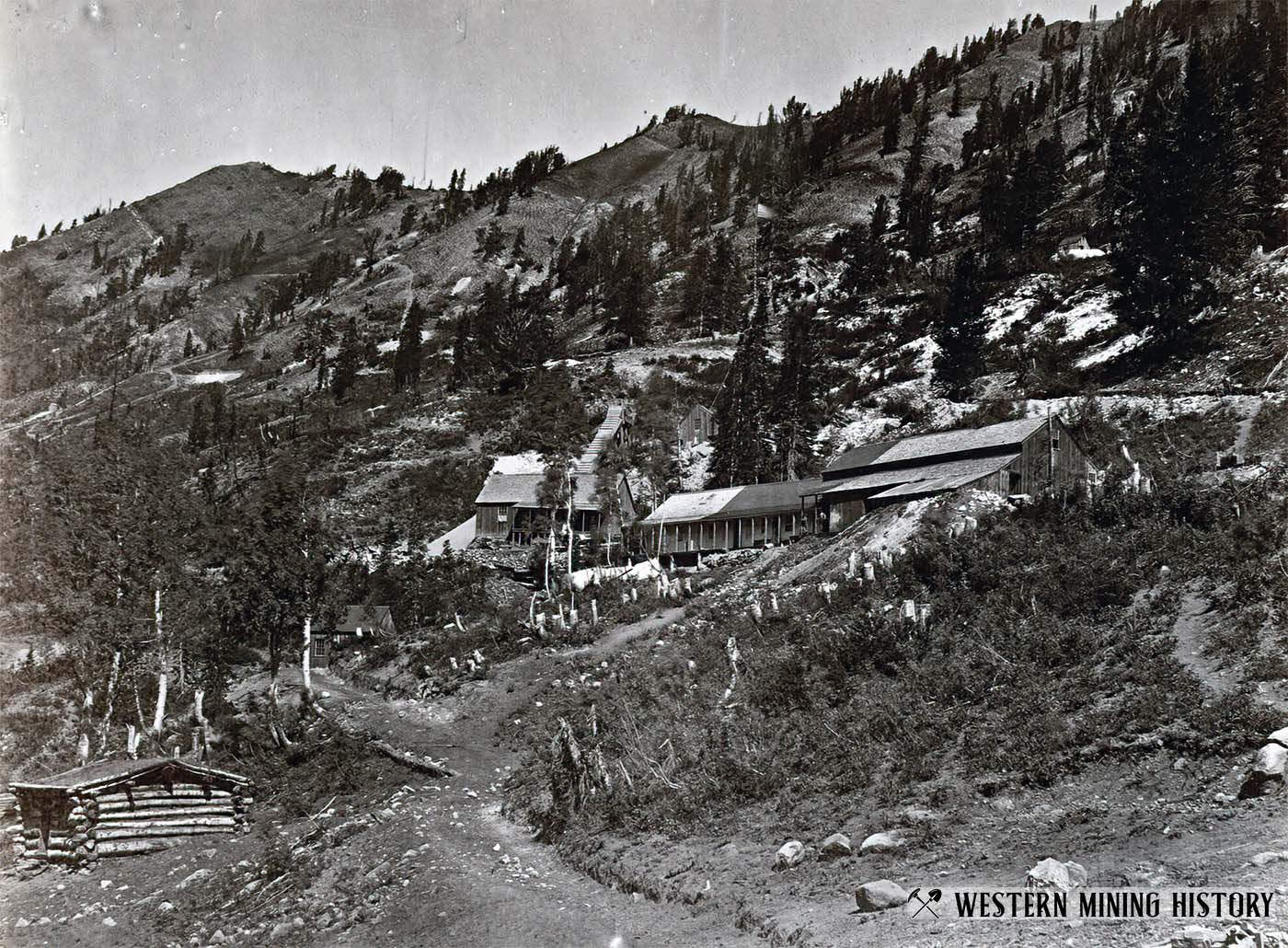
The 1870s were the best years for the district’s mines. The Emma mine at Alta emerged as richest mine in the area. The district is credited with total gold production of around 30,000 ounces.
Summit and Wasatch Counties
The Park City district, straddling the border between Summit and Wasatch counties, is Utah’s fourth-largest gold-producing district.
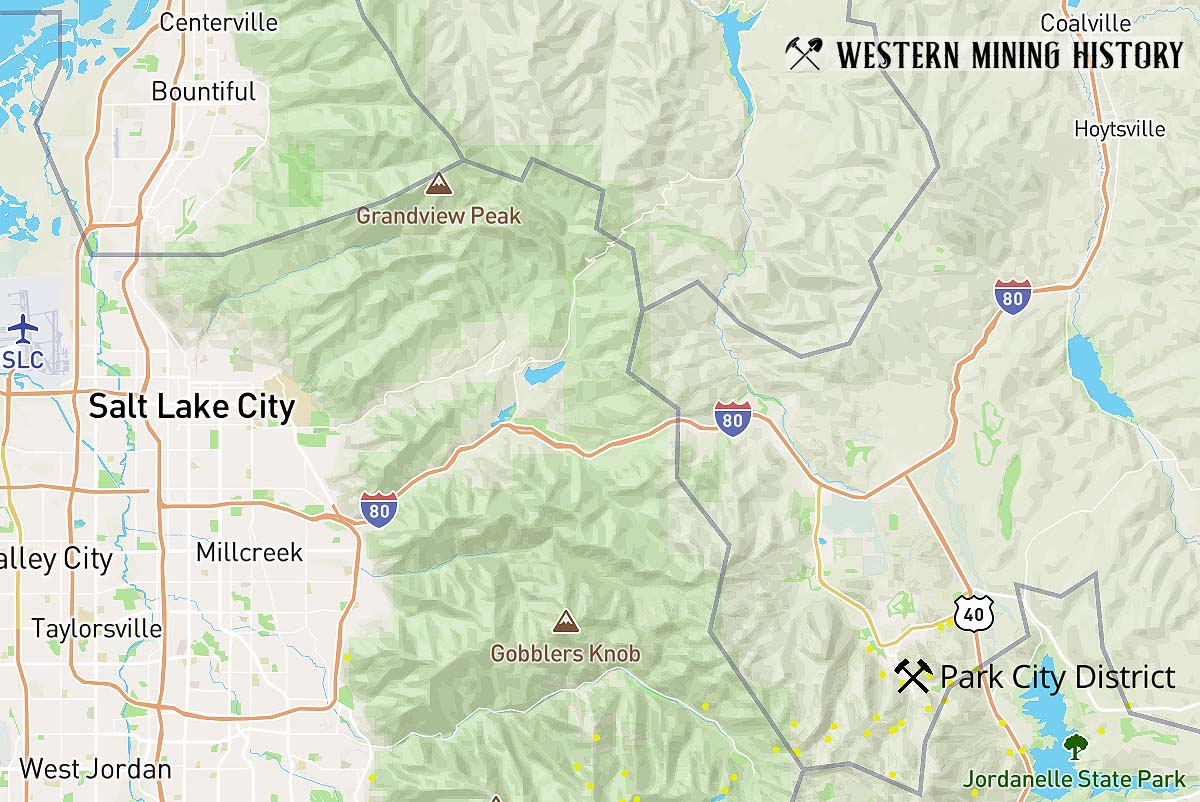
Park City District
Though silver and lead were the chief commodities in this district, significant gold, copper, and zinc were also mined. With 790,000 ounces of gold produced through 1959, Park City is the fourth largest gold district in Utah.
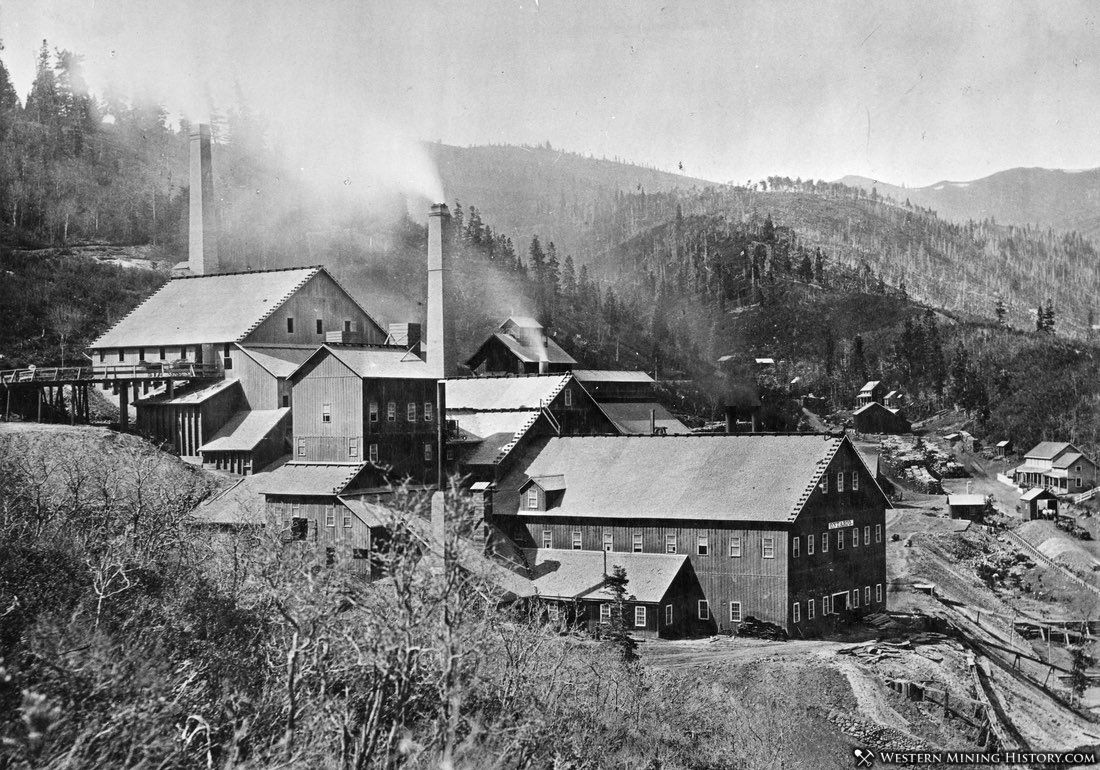
Lead-silver ores were first discovered here in 1869. New high-grade “bonanza” ore bodies were discovered in the early 1870s and Park City rose as one of the state’s most important mining districts. Although the collapse of silver prices in 1893 dealt a blow to the mining industry, the district remained a significant producer well into the 1900s.
Tooele County
Gold is the primary mineral commodity mined in Tooele County. The Camp Floyd, Ophir-Rush Valley, Clifton, and Willow Springs are the top districts with a combined 1,257,000 ounces of gold production through 1960. This figure was more than doubled by the open-pit mine that operated at Mercur from 1985 to 1998.
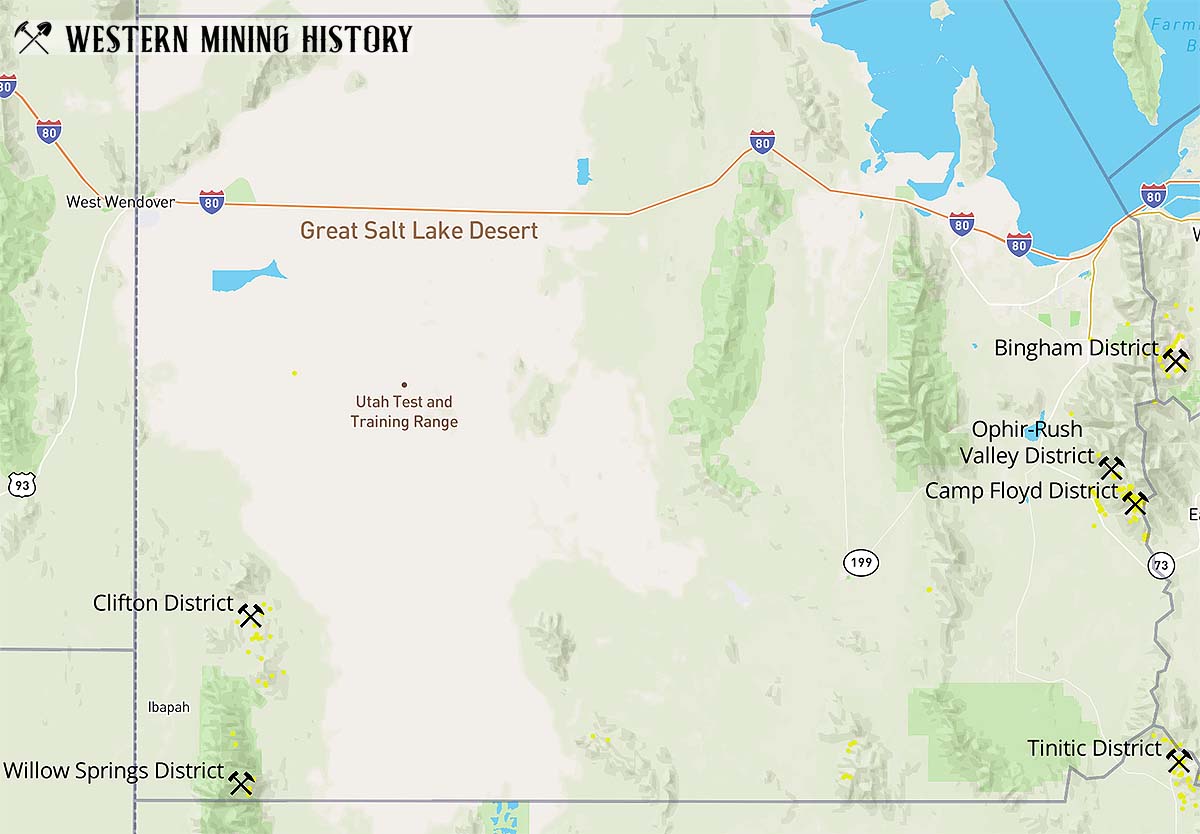
Camp Floyd (Mercur) District
The Camp Floyd (Mercur) district is different than other Utah districts in that it is primarily a gold district with silver and mercury as byproducts. This is the third largest producer of gold in the state with about 1,115,000 ounces mined through 1959. Production from the open-pit mine here, which started operating in 1985, brings the total to approximately 2,500,000 ounces.
Gold placers were first discovered here in 1870, but they were not big producers. The lode ores were too complex to treat economically so the district was mostly deserted by the late 1870s. New gold discoveries brought the district back to life in the early 1880s and the town of Mercur was founded.
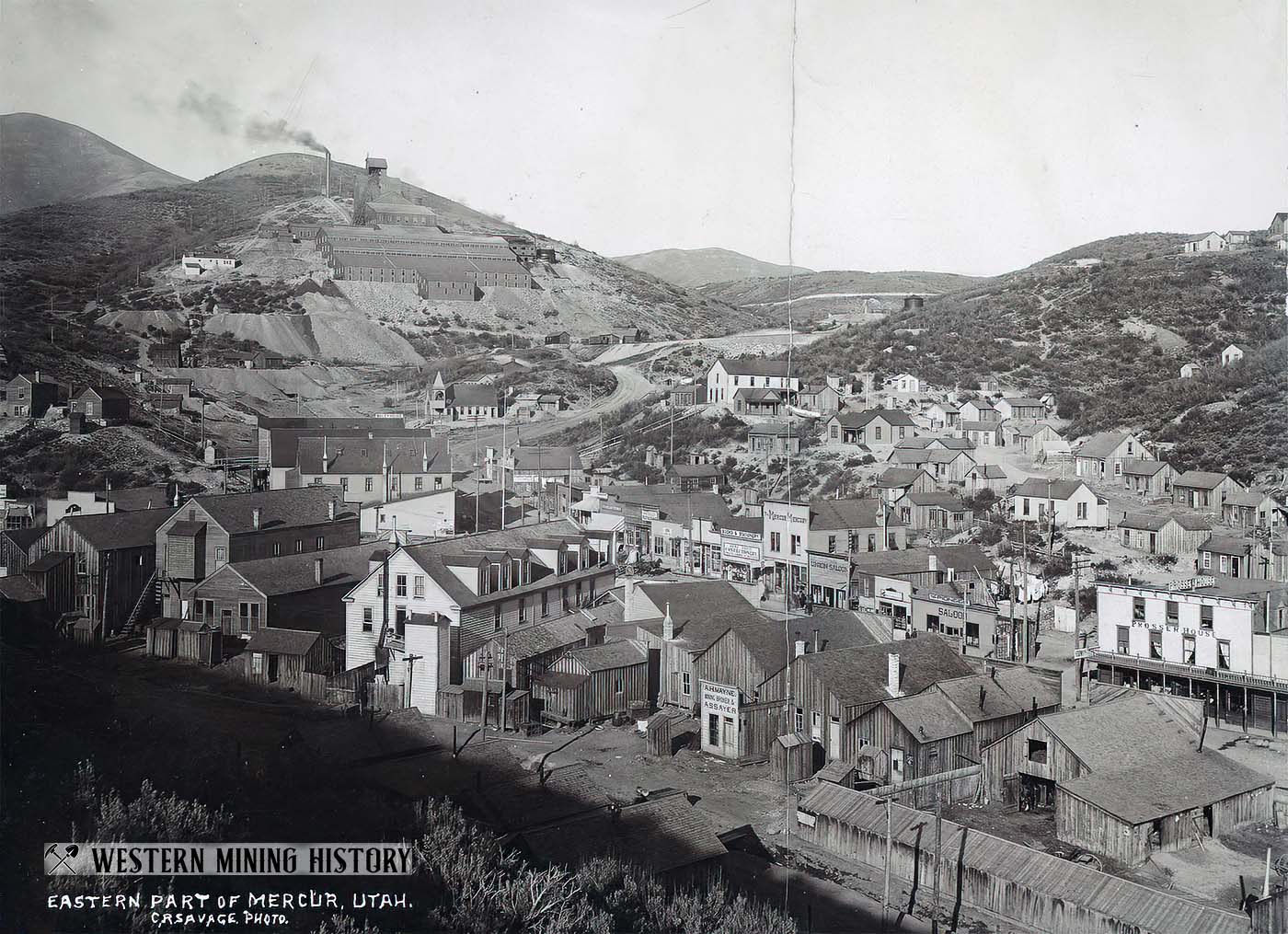
When the cyanide process for treating gold ores became available, the Mercur gold ores became economically viable to mine. In 1897, the 1000-ton-per-day Golden Gate mill at Mercur was the largest cyanide mill in the U.S. The district boomed until 1913. A resurgence in 1932 resulted in a steady period of mining until World War II.
An open-pit mine was developed at Mercur starting in 1985, and the townsite vanished with the expansion of the new mine. The mine operated until 1998.
Clifton District
The Clifton district is located in the Clifton Hills near the Utah-Nevada boundary, at the old mining town of Gold Hill. In addition to gold, the mines here produced significant amounts of copper, lead, and silver.
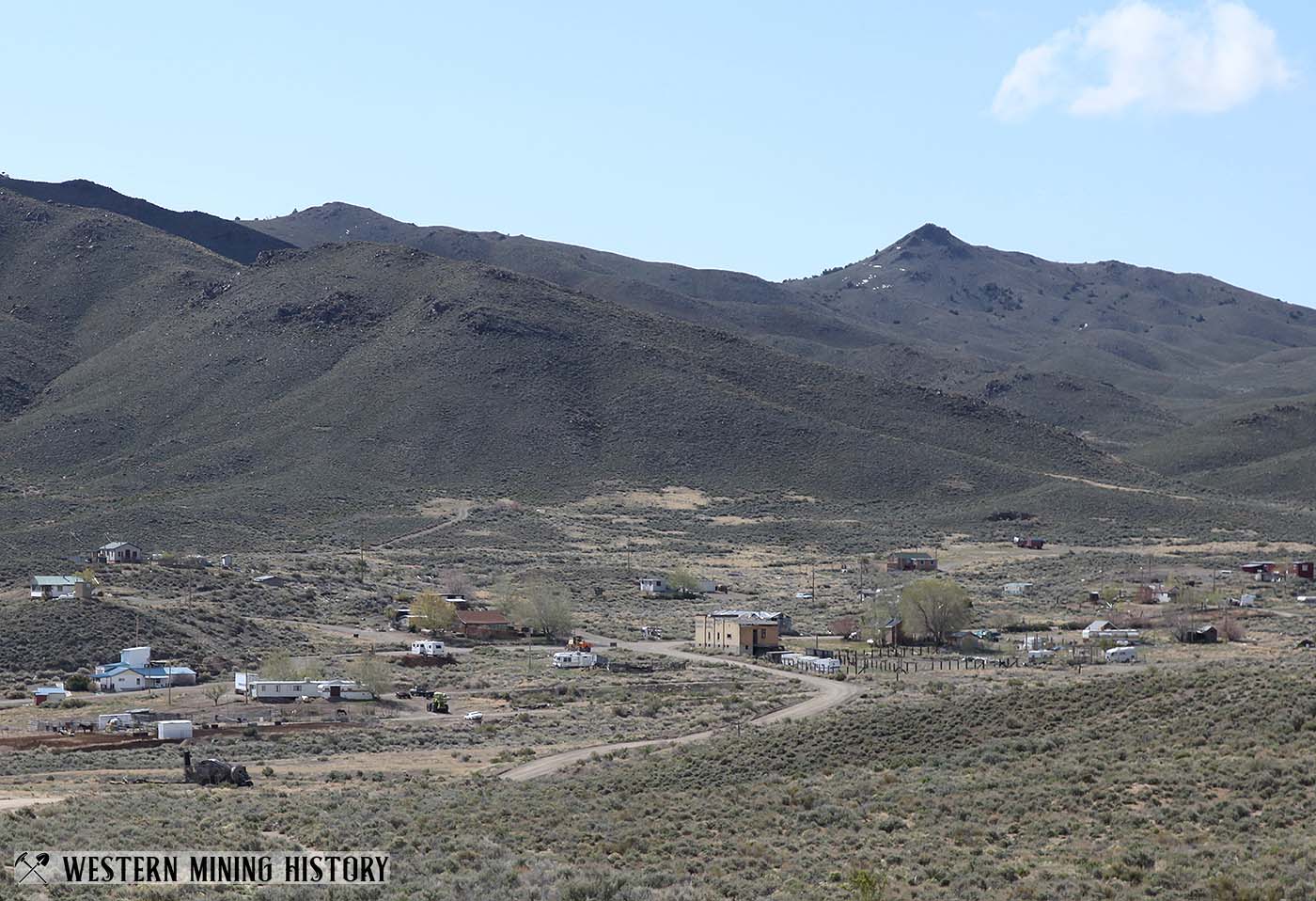
Initial discoveries were made here in 1858, but mining did not get started until 1869. A smelter was built in 1871 but only operated for a few years. The first significant returns from the mine were made from 1892 to 1895 when over $200,000 of gold and other metals was recovered.
The district had its best years starting in 1917 when a rail line was built to the area. This period lasted until 1934 when production decreased significantly. Total gold production from 1892 through 1959 was approximately 26,000 ounces.
Ophir-Rush Valley District
The Ophir-Rush Valley district produced lead, silver, copper, and zinc. Gold was recovered mostly as a byproduct of the base-metal ores – total production through 1959 was about 104,000 ounces.
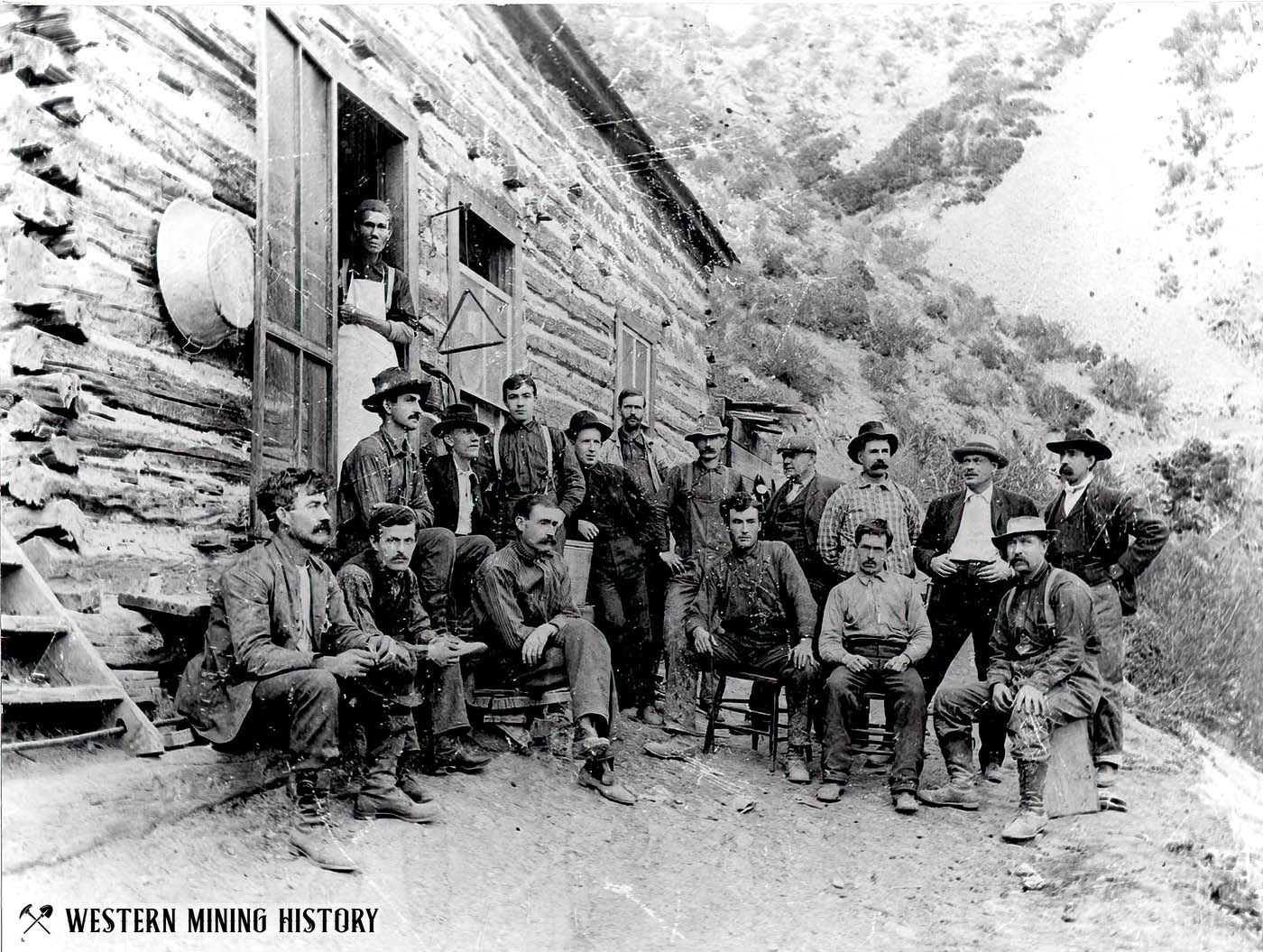
Silver deposits were first discovered here in 1864 but it wasn’t until additional discoveries were made that mining got underway and the town of Ophir was founded in 1870. Ophir prospered until 1880 and Rush Valley until 1890. Zinc production brought the district back to life starting in 1904.
Willow Springs District
The Willow Springs district was organized in 1891. Gold, lead, silver, and smaller amounts of copper were mined here. The greatest period of production was from 1934 to 1950. Around 11,650 ounces of gold were produced in the district.
Utah County
The American Fork district was the only significant producer of gold that was entirely within Utah County. The East Tinitic district resides in the county, but its history and production was tied to the Tintic District in neighboring Juab County, and was described above.
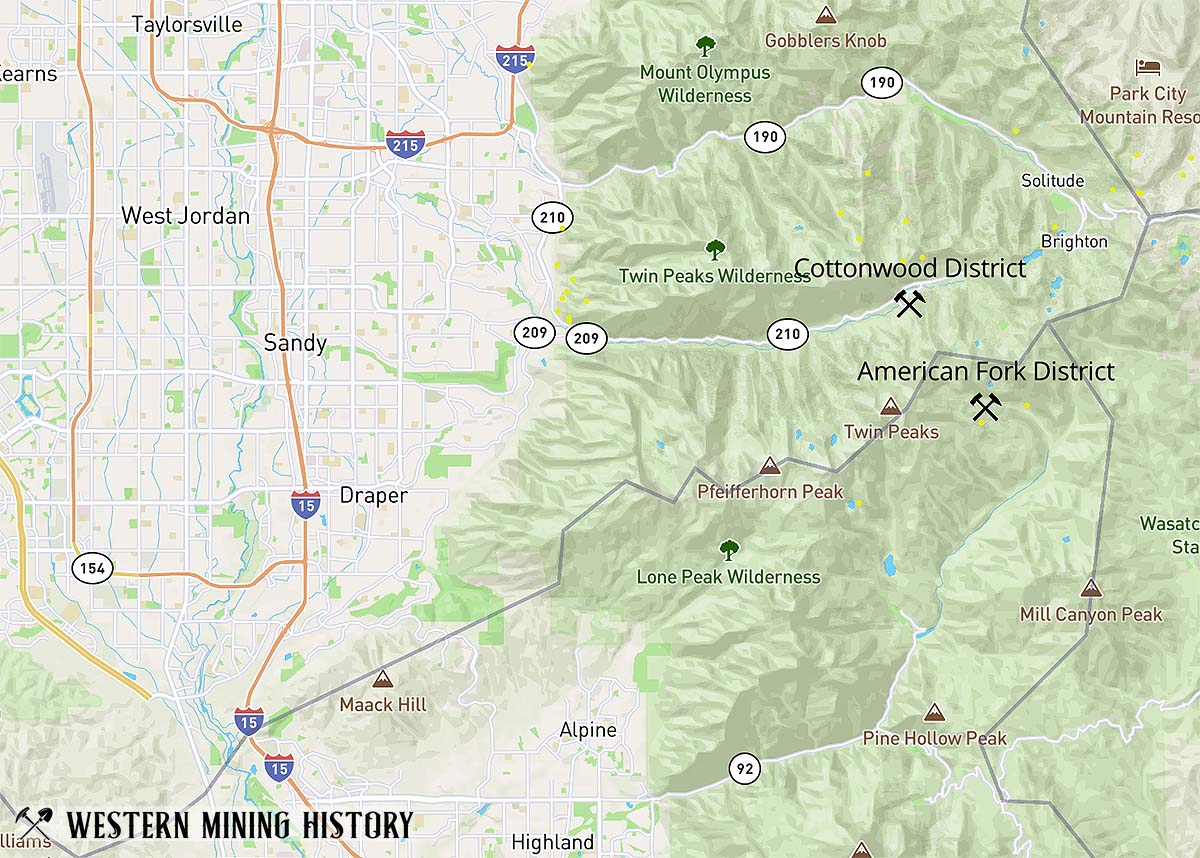
American Fork District
The American Fork district was organized in 1870, with the Miller mine as the largest producer. Most mines were idle by 1880. A new ore body was discovered in 1904 that resulted in a period of increased production that lasted until 1908. Another period of increased mining activity started in 1923, lasting until 1935. Total gold production of the district through 1959 was about 45,000 ounces.
Related Articles
Principal Gold Districts of Montana